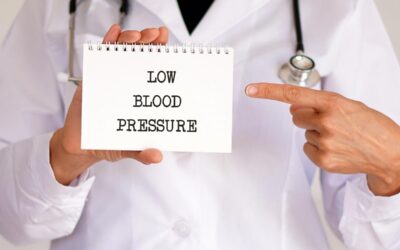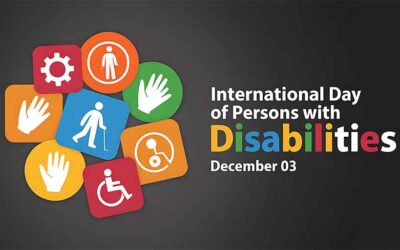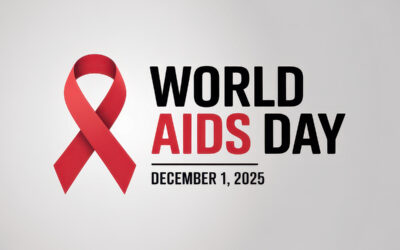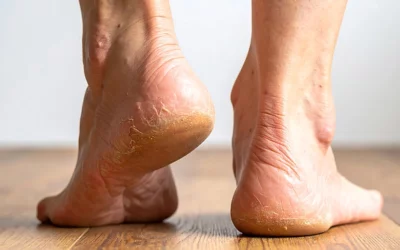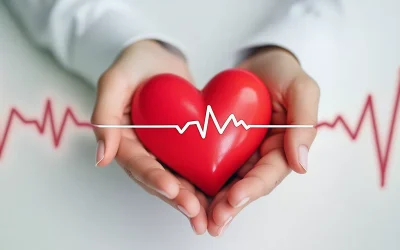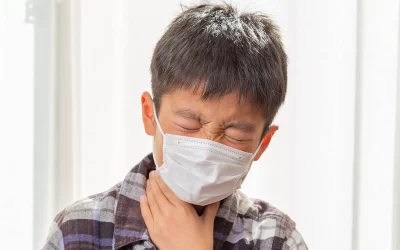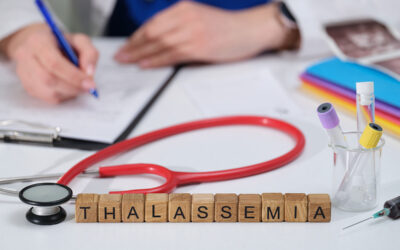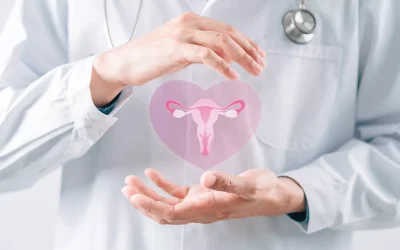World Pneumonia Day 2025: A Global Fight Against a Preventable and Treatable Disease
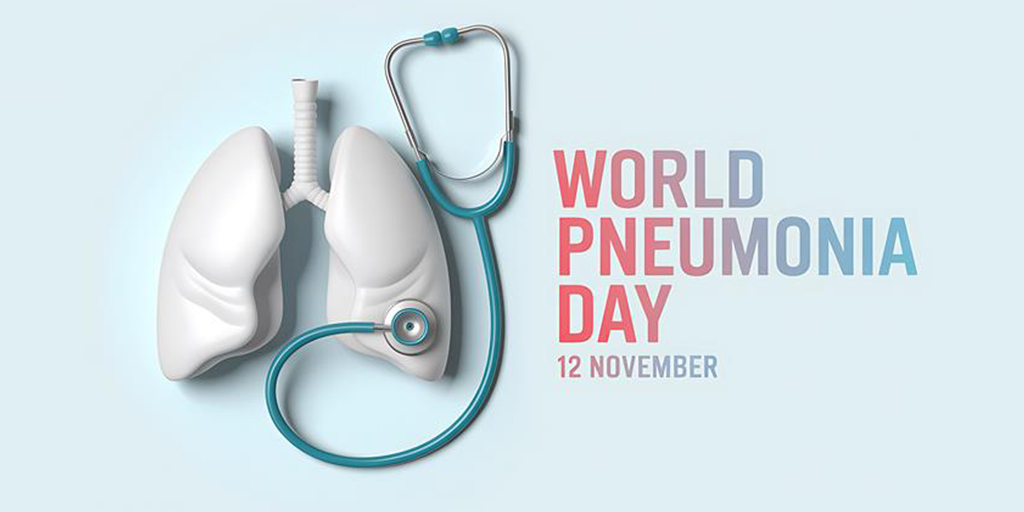
Pneumonia is one of the leading causes of respiratory illness and related deaths worldwide. Despite being both preventable and treatable, it continues to place a significant burden on healthcare systems, particularly in low- and middle-income countries. In India, pneumonia accounts for a substantial percentage of childhood illnesses and hospitalisations. That said, improved vaccination coverage, better diagnostic facilities, and increased public awareness are helping to reduce the impact of this condition.
To strengthen these efforts and unite global voices against pneumonia, World Pneumonia Day is observed every year on 12 November, serving as a global call to raise awareness, promote preventive care, and help ensure that no life is lost to a disease that can be prevented, detected early, and treated.
In this article, we will discuss World Pneumonia Day 2025 in detail, go through the causes and symptoms of pneumonia, and highlight effective pneumonia treatment and prevention strategies.
Table of Contents
ToggleWorld Pneumonia Day 2025: History and Significance
World Pneumonia Day was first established in 2009 by the Global Coalition Against Child Pneumonia to draw international attention to one of the world’s most preventable yet deadly infectious diseases. The initiative was later supported by leading health organisations, including the World Health Organization (WHO) and UNICEF, to strengthen global efforts in reducing pneumonia-related deaths among children and adults.
The primary goal of World Pneumonia Day is to raise awareness, encourage preventive measures, and promote timely access to treatment. Over the years, the day has evolved into a powerful campaign that unites governments, healthcare institutions, and civil society to advocate for improved vaccination coverage, oxygen availability, and stronger health systems.
In India, the day holds special importance as pneumonia continues to be a leading cause of child mortality. Each year, hospitals and public health agencies mark the occasion through awareness drives, vaccination camps, and community health education, reaffirming the shared commitment to ensure that no life is lost to a treatable respiratory infection.
Pneumonia in India: Trends and Challenges
Pneumonia continues to be a major public health concern in India, particularly among children under five and older adults. Despite advances in vaccination and healthcare delivery, it remains one of the leading causes of child mortality, accounting for 17.5% of under-five deaths in the country (Registrar General of India, 2017–19).
As per data from the Health Management Information System (HMIS) 2022–23:
- More than 4.7 lakh childhood pneumonia cases were reported across India.
- Uttar Pradesh, Rajasthan, and Madhya Pradesh recorded the highest number of cases.
- Pneumonia caused over 11,000 infant deaths and 4,500 deaths among children aged 1–5 years nationwide.
To combat this burden, the Ministry of Health and Family Welfare (MoHFW) has adopted a comprehensive, multi-level strategy under the National Health Mission (NHM), focusing on awareness, prevention, and timely treatment.
Key government initiatives include:
- SAANS Campaign (Social Awareness and Action to Neutralize Pneumonia Successfully): Launched in 2019, this annual campaign runs from November to February to promote awareness, early diagnosis, and standardised pneumonia management across all states and union territories.
- Pneumococcal Conjugate Vaccine (PCV) Rollout: Introduced nationwide under the Universal Immunisation Programme (UIP) to protect children against bacterial pneumonia through a three-dose schedule.
- Capacity Building: Training healthcare workers, including ASHAs, ANMs, nurses, and medical officers, for early identification and management of childhood pneumonia.
- Community Awareness: Conducting IEC campaigns to educate parents and caregivers about symptom recognition, vaccination, and timely care-seeking.
- Nutritional and Home-Based Care: Promoting exclusive breastfeeding, Vitamin A supplementation, and home-based pneumonia management through the Home-Based Care for Young Child Programme (HBYC).
While these initiatives have strengthened pneumonia prevention and management, challenges persist – particularly in ensuring full vaccine coverage in remote regions and addressing risk factors such as air pollution, malnutrition, and overcrowding. Collaborative efforts between government programmes and healthcare institutions remain essential to ensure early diagnosis, effective treatment, and improved survival outcomes.
What is Pneumonia?
Pneumonia is an infection that inflames the air sacs (alveoli) in one or both lungs. These air sacs may fill with fluid or pus, causing symptoms such as cough, fever, chills, and difficulty breathing. The condition can range from mild to life-threatening, depending on the person’s age, overall health, and the type of germ causing the infection.
Pneumonia may be caused by bacteria, viruses, or fungi, and is commonly classified based on how and where it develops:
- Community-acquired pneumonia (CAP): The most common type, usually contracted outside hospitals or healthcare facilities.
- Hospital-acquired pneumonia (HAP): Occurs during hospitalisation, often more severe due to antibiotic-resistant bacteria.
- Viral pneumonia: Caused by viruses such as influenza, RSV, or coronavirus, which can lead to complications if untreated.
- Aspiration pneumonia: Occurs when food, liquid, or vomit enters the lungs, typically seen in individuals with swallowing difficulties.
In severe cases, pneumonia can reduce oxygen levels in the blood, placing extra strain on vital organs. Early diagnosis and treatment are therefore essential to prevent complications and ensure full recovery.
Common Causes and Risk Factors for Pneumonia
Pneumonia can develop when infectious agents such as bacteria, viruses, or fungi enter the lungs and trigger inflammation. The body’s immune system usually prevents such infections, but certain conditions or environmental factors can weaken these defences, making the lungs more vulnerable.
Common Causes of Pneumonia
- Bacteria: Streptococcus pneumoniae is the most frequent bacterial cause, followed by Haemophilus influenzae and Staphylococcus aureus.
- Viruses: Influenza, respiratory syncytial virus (RSV), and coronaviruses are among the leading viral causes.
- Fungi: More likely to affect people with weakened immune systems, such as those undergoing chemotherapy or living with chronic illnesses.
- Aspiration: Accidental inhalation of food, saliva, or vomit into the lungs can lead to aspiration pneumonia.
Risk Factors
- Age: Infants, young children, and adults over 65 are particularly vulnerable to developing pneumonia.
- Chronic illnesses: Conditions such as diabetes, asthma, COPD, and heart disease reduce the body’s ability to fight infections.
- Weakened immunity: Caused by HIV, cancer treatment, or prolonged steroid use.
- Smoking and air pollution: Damage the airways and reduce lung function.
- Malnutrition and poor living conditions: Common in developing regions, contributing to higher infection rates.
- Hospitalisation or recent surgery: Increases exposure to healthcare-associated pathogens.
Understanding these causes and risk factors is vital for both prevention and early medical intervention, especially in regions like India, where environmental pollution and limited vaccination coverage remain key challenges in pneumonia control.
Early Signs and Symptoms of Pneumonia
The symptoms of pneumonia can vary depending on the cause, age, and overall health of the individual. In most cases, the condition begins with mild respiratory symptoms that can quickly progress if not treated in time. Recognising these early signs is crucial for preventing complications and ensuring prompt medical care.
Common symptoms of pneumonia include:
- Cough with coloured mucus: Thick, yellowish, greenish, or sometimes blood-tinged sputum.
- Fever and chills: Often accompanied by sweating and body aches.
- Shortness of breath: Difficulty breathing or rapid, shallow breaths even at rest.
- Chest pain: Sharp or stabbing pain that worsens when coughing or inhaling deeply.
- Fatigue and weakness: A general feeling of tiredness and low energy.
- Loss of appetite: Reduced desire to eat, which may delay recovery.
- Nausea or vomiting: More common in young children and older adults.
In severe cases, pneumonia can also cause confusion, bluish lips or fingertips (due to low oxygen levels), and a persistent high fever that does not subside with medication. If any of these symptoms persist or worsen, seeking medical help immediately is essential for timely diagnosis and treatment.
How is Pneumonia Diagnosed?
Accurate diagnosis is essential to confirm pneumonia, determine its cause, and guide effective treatment. Diagnosis begins with a detailed clinical evaluation by respiratory specialists, followed by laboratory and imaging tests that help identify the infection and assess its severity.
Common diagnostic methods include:
- Physical examination: Doctors listen to the lungs for abnormal sounds such as crackles or wheezing, which may suggest fluid accumulation.
- Chest X-ray: The most widely used imaging test that helps detect lung inflammation, infection patterns, and fluid-filled areas. It also helps distinguish pneumonia from other respiratory conditions such as tuberculosis or chronic bronchitis.
- Blood tests: Performed to identify infection and measure inflammatory markers.
- Sputum analysis: Helps determine whether the infection is bacterial, viral, or fungal, ensuring targeted treatment.
- Pulse oximetry and arterial blood gas test: Assess oxygen levels in the blood to detect respiratory distress.
- CT scan (if needed): CT Scan provides a detailed view of the lungs when X-ray results are unclear or complications are suspected.
Together, these tests help doctors confirm the presence of pneumonia, identify the underlying cause, and monitor how well the patient is responding to treatment.
Treatment and Recovery from Pneumonia
Pneumonia is a treatable condition, and with timely medical care, most people recover fully. The treatment approach depends on the cause of the infection, its severity, and the patient’s overall health.
Common treatment options include:
- Antibiotics: Prescribed when the infection is bacterial. Completing the full course is vital for complete recovery and preventing recurrence.
- Antiviral or antifungal medications: Used when the infection is caused by viruses or fungi, respectively.
- Fever and pain control: Paracetamol or ibuprofen may be recommended to relieve fever, chest pain, and body aches.
- Oxygen therapy: Administered in moderate to severe cases when oxygen levels fall below normal.
- Hydration and rest: Adequate fluids and proper rest help the body fight infection and heal faster.
- Hospital care: In severe cases or among high-risk patients (elderly, infants, or those with chronic conditions), hospitalisation ensures close monitoring and advanced medical support.
Most people begin to feel better within a week of treatment, though fatigue and mild cough may persist for some time. A complete pneumonia cure is possible when treatment is started early and followed consistently. Regular follow-up and lung evaluations are recommended to prevent long-term complications and ensure full respiratory recovery.
Prevention of Pneumonia
Preventing pneumonia begins with strengthening the body’s immunity and reducing exposure to infection-causing agents. Simple lifestyle habits, timely vaccination, and environmental precautions can go a long way in protecting both children and adults from this serious lung infection.
Effective ways to prevent pneumonia include:
- Vaccination: Immunisation against Streptococcus pneumoniae (pneumococcal vaccine), Haemophilus influenzae type b (Hib), and influenza virus helps prevent many cases of pneumonia, especially in children and older adults.
- Good hygiene practices: Washing hands regularly and using tissues or elbows while sneezing or coughing helps prevent the spread of germs.
- Avoid smoking and pollution exposure: Tobacco smoke and polluted air damage lung tissue, reducing the body’s natural defences against infection.
- Balanced diet and hydration: A diet rich in fruits, vegetables, and dietary fibre strengthens immunity, while adequate fluid intake keeps the respiratory system healthy.
- Adequate sleep and exercise: Sufficient rest and regular physical activity improve lung capacity and boost the immune response.
- Manage chronic conditions: Controlling health problems such as diabetes, heart disease, or asthma lowers pneumonia risk.
- Avoid close contact with sick individuals: Minimising exposure to people with flu or respiratory infections helps prevent transmission.
In a country like India, where environmental pollution and limited vaccination awareness contribute to higher infection rates, following these preventive steps can significantly reduce the burden of pneumonia and related complications.
At-Risk Groups: Who Is Most Vulnerable to Pneumonia?
While pneumonia can affect anyone, certain groups are at a much higher risk of developing severe illness or complications. Understanding who is most vulnerable helps ensure that preventive care, vaccination, and early diagnosis reach those who need them most.
Groups at higher risk include:
- Young children under five years: Their immune systems are still developing, making them more prone to infections and severe complications.
- Older adults (above 65 years): Ageing weakens immunity and lung function, increasing susceptibility to pneumonia and related respiratory issues.
- People with chronic illnesses: Conditions such as diabetes, heart disease, chronic obstructive pulmonary disease (COPD), and kidney disorders reduce the body’s ability to fight infections.
- Immunocompromised individuals: Patients undergoing chemotherapy, organ transplant recipients, or those living with HIV/AIDS have a higher likelihood of severe infection.
- Malnourished individuals: Poor nutrition weakens immune defences, especially among children in low-income settings.
- People exposed to pollution and smoke: Long-term exposure to tobacco smoke, indoor air pollution, or occupational dust increases lung vulnerability.
- Hospitalised or post-surgical patients: Infections acquired during hospital stays can be more resistant to antibiotics and require immediate medical care.
Complications and Severe Outcomes of Pneumonia
When pneumonia is not treated in time or becomes severe, it can lead to complications that affect not only the lungs but also other organs in the body. These complications are more common among older adults, young children, and people with weakened immune systems. Recognising them early helps doctors intervene promptly and prevent long-term damage.
Read More: Healthy Habits for a Strong Immune System
Common complications of pneumonia include:
- Acute Respiratory Distress Syndrome (ARDS): A severe lung condition where the air sacs fill with fluid, making breathing extremely difficult and requiring hospital-based oxygen or ventilator support.
- Lung abscess: A pocket of pus that forms within the lung tissue, usually caused by untreated bacterial infection.
- Respiratory failure: Occurs when oxygen levels in the blood drop dangerously low or carbon dioxide levels rise too high, often requiring intensive care.
- Sepsis: A life-threatening response of the body to infection, where the bacteria spread into the bloodstream and affect multiple organs.
- Pleural effusion: Accumulation of fluid around the lungs, causing chest pain and shortness of breath.
Although these complications can be serious, timely diagnosis, appropriate antibiotics, and supportive care make full recovery possible in most cases. Early treatment remains the most effective way to prevent pneumonia from reaching a critical stage.
How You Can Contribute on World Pneumonia Day 2025
Every individual can play a meaningful role in preventing pneumonia and supporting awareness initiatives on World Pneumonia Day. Simple, community-based actions can help protect vulnerable populations, promote early diagnosis, and reduce the global burden of this preventable condition. Here are some ways individuals can contribute to World Pneumonia Day:
- Get vaccinated and encourage others: Participate in free immunisation camps near you or at local hospitals offering pneumonia, flu, and Hib vaccinations.
- Promote hygiene and respiratory etiquette: Wash hands frequently, wear a mask in crowded areas, and cover the mouth and nose when coughing or sneezing.
- Support awareness drives: Join local health campaigns, lung health initiatives, or educational programmes in schools and workplaces.
- Share accurate information: Use social media to spread verified facts about pneumonia prevention, symptoms, and treatment, helping counter misinformation.
- Encourage early medical consultation: Motivate family and friends to seek timely medical help for persistent cough, fever, or breathing difficulty.
- Support vulnerable groups: Help ensure children, the elderly, and individuals with chronic illnesses in your community receive adequate nutrition, clean air, and preventive care.
How Graphic Era Hospital Helps Supports Pneumonia Care
At Graphic Era Hospital, Dehradun, we understand how distressing pneumonia can be – whether it affects a child, an elderly loved one, or someone recovering from another illness. Our goal is not only to treat the infection but also to ensure lasting recovery, stronger lungs, and peace of mind for every patient. We provide:
Experienced Respiratory Specialists
Our team of pulmonologists and internal medicine experts has extensive experience in diagnosing and managing all forms of pneumonia – from community-acquired to severe hospital-acquired infections. Each treatment plan is tailored to the patient’s age, health status, and recovery goals, ensuring care that is both precise and compassionate.
Advanced Imaging and Diagnostic Technology
We use advanced diagnostic tools, including high-resolution chest X-rays, CT scans, and laboratory testing, to identify the cause and severity of the infection accurately. These technologies help our specialists begin treatment promptly and monitor progress closely throughout recovery.
Comprehensive and Personalised Treatment Plans
Our approach combines medical precision with patient comfort. Depending on the condition, we provide antibiotic or antiviral therapy, oxygen support, and rehabilitative care to aid faster healing. For those requiring hospitalisation, our critical care and respiratory units ensure continuous monitoring and expert supervision around the clock.
Patient-Centred Recovery and Support
We believe that recovery continues even after discharge. Our team provides follow-up consultations, vaccination guidance, and nutritional counselling to help prevent recurrence and improve overall lung health. Every patient receives support, reassurance, and education to stay healthy long after treatment.
Let’s Build a Pneumonia-Free Future Together
Pneumonia remains one of the most common yet preventable causes of respiratory illness worldwide. However, with timely medical attention, vaccination, and greater awareness, countless lives can be saved every year. This World Pneumonia Day, let’s commit to recognising the warning signs early, supporting preventive healthcare, and ensuring that no one suffers due to delayed treatment or lack of awareness.
At Graphic Era Hospital, Dehradun, we stand dedicated to improving respiratory health through expert care, advanced diagnostic facilities, and patient-first treatment. From accurate diagnosis to recovery and rehabilitation, our specialists are here to guide patients at every step with compassion and clinical excellence.
To consult a pulmonologist or book a respiratory health check-up at Graphic Era Hospital, call 1800-889-7351.
Frequently Asked Questions (FAQs)
Who is most at risk of developing pneumonia?
Infants, older adults, and individuals with chronic illnesses such as diabetes, asthma, or heart disease are more likely to develop pneumonia. Weakened immunity, poor nutrition, and exposure to air pollution also increase the risk, particularly in densely populated areas.
What is the recovery time for pneumonia?
Most people recover from pneumonia within one to three weeks with timely treatment. However, recovery may take longer for older adults or those with underlying health conditions. Adequate rest, hydration, and follow-up with a doctor help ensure complete recovery.
Is pneumonia curable?
Yes, pneumonia is curable in most cases. With early diagnosis and appropriate medication, patients usually recover fully. Severe cases may require hospital care and oxygen therapy to support breathing during treatment.
Can dust and air pollution cause pneumonia?
Exposure to high levels of dust, smoke, or polluted air does not directly cause pneumonia but can weaken the lungs and increase vulnerability to respiratory infections. Using masks and avoiding polluted environments can reduce this risk.
Does pneumonia affect oxygen levels?
Yes, pneumonia can lower blood oxygen levels because the lungs struggle to exchange oxygen efficiently when inflamed or filled with fluid. Severe cases may require oxygen support under medical supervision.
For how long is pneumonia contagious?
Viral and bacterial pneumonia can be contagious for several days until treatment begins and symptoms improve. Maintaining good hygiene, covering coughs, and washing hands regularly can help prevent spreading the infection.
What is the danger stage of pneumonia?
Severe pneumonia, when left untreated, can lead to respiratory failure or sepsis. Persistent high fever, bluish lips, rapid breathing, or confusion are warning signs that require immediate hospital care.
Where can I find expert pneumonia treatment near me in Dehradun?
Graphic Era Hospital in Dehradun offers comprehensive pneumonia diagnosis, treatment, and recovery services. The hospital combines advanced imaging, experienced pulmonologists, and compassionate care to ensure safe and effective treatment for all patients.
What vitamins and nutrients help in pneumonia recovery?
Nutrients such as vitamin C, vitamin D, and zinc strengthen the immune system and support lung healing. A balanced diet with fresh fruits, vegetables, and adequate fluids helps speed up recovery.
By Specialities
- Bariatric Surgery
- Cancer Care
- Cardiology
- Dental
- Dermatology
- Diabetes & Endocrinology
- Endocrinology and Diabetes
- ENT (Ear Nose Throat)
- Eye Care
- Gastroenterology
- Haematology
- Health Care
- Health Tips
- Hematology
- Hepatology
- Internal Medicine
- Mental Health and Behavioural Sciences
- Metabolic
- Neonatology
- Nephrology
- Neurology
- Nutrition & Dietetics
- Obstetrics & Gynaecology
- Oncology
- Ophthalmology
- Orthopaedics
- Paediatric
- Physiotherapy & Rehabilitation
- Plastic and Reconstructive Surgery
- Psychology
- Pulmonology
- Rheumatology
- Spine
- Urology
Recent Posts
- What Causes a Sudden Drop in Blood Pressure? Know the Symptoms Before It’s Too Late
- Burning Sensation While Urinating: Common Causes and When to See a Urologist
- Strep Throat (Bacterial Infection): Symptoms, Diagnosis, and Effective Care
- International Day of Persons with Disabilities 2025: Breaking Barriers, Building a More Inclusive Future
- World AIDS Day 2025: Transforming HIV Care Through Awareness and Action
Need expert medical advice?
Share your details and our healthcare specialists will reach out to assist you.
By proceeding, you acknowledge and agree to our Privacy Policy, Terms of Use, and Disclaimer.
